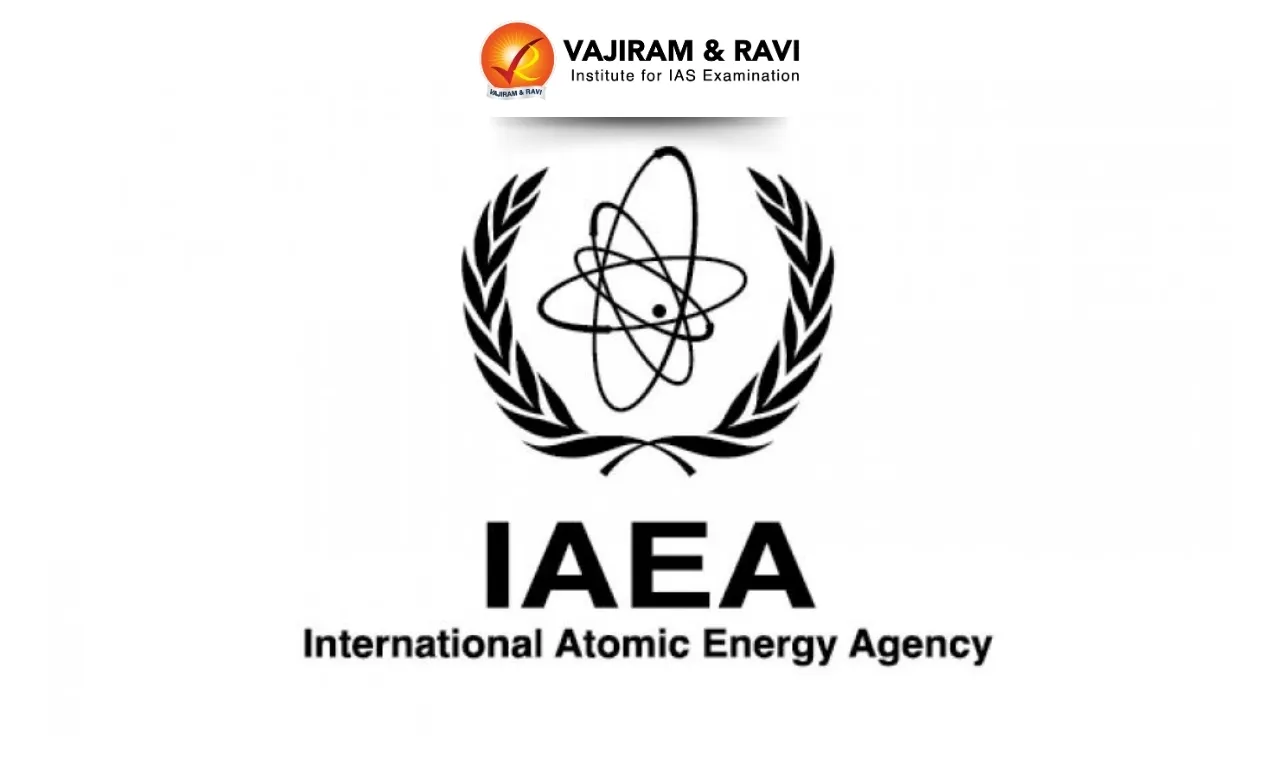International Atomic Energy Agency Latest News
The head of the UN’s nuclear watchdog International Atomic Energy Agency has said a team of its inspectors are “back in Iran,”
About International Atomic Energy Agency
- It is the world’s leading intergovernmental organisation for scientific and technical cooperation in the nuclear field.
- The IAEA Statute was approved on 23 October 1956 and came into force on 29 July 1957.
- The IAEA is an autonomous organization within the United Nations system.
- It reports to both the United Nations General Assembly and the UN Security Council.
- Its primary goal is to ensure that nuclear energy is not diverted for weapons purposes.
- Member Countries: The agency currently has 180 member states, reflecting its wide international mandate and credibility.
- Headquarters: Vienna, Austria.
Institutional Structure of the IAEA
- General Conference: The General Conference, composed of all member states, meets annually to approve budgets and set general policy directions.
- Board of Governors: The Board of Governors, comprising 35 members, meets about five times a year to: Approve safeguards agreements, Carry out statutory functions, and Appoint the Director General.
- Secretariat: The Secretariat, led by the Director General, handles the IAEA’s daily operations.
Functions of the IAEA
- The IAEA works to ensure that nuclear technology is used solely for peaceful purposes.
- It applies comprehensive nuclear safeguards, including: Monitoring,On-site inspections,Information analysis, and Other techniques to verify peaceful use.
Source: NIE
Last updated on December, 2025
→ Check out the latest UPSC Syllabus 2026 here.
→ Join Vajiram & Ravi’s Interview Guidance Programme for expert help to crack your final UPSC stage.
→ UPSC Mains Result 2025 is now out.
→ UPSC Notification 2026 is scheduled to be released on January 14, 2026.
→ UPSC Calendar 2026 is released on 15th May, 2025.
→ The UPSC Vacancy 2025 were released 1129, out of which 979 were for UPSC CSE and remaining 150 are for UPSC IFoS.
→ UPSC Prelims 2026 will be conducted on 24th May, 2026 & UPSC Mains 2026 will be conducted on 21st August 2026.
→ The UPSC Selection Process is of 3 stages-Prelims, Mains and Interview.
→ UPSC Result 2024 is released with latest UPSC Marksheet 2024. Check Now!
→ UPSC Prelims Result 2025 is out now for the CSE held on 25 May 2025.
→ UPSC Toppers List 2024 is released now. Shakti Dubey is UPSC AIR 1 2024 Topper.
→ UPSC Prelims Question Paper 2025 and Unofficial Prelims Answer Key 2025 are available now.
→ UPSC Mains Question Paper 2025 is out for Essay, GS 1, 2, 3 & GS 4.
→ UPSC Mains Indian Language Question Paper 2025 is now out.
→ UPSC Mains Optional Question Paper 2025 is now out.
→ Also check Best IAS Coaching in Delhi
International Atomic Energy Agency FAQs
Q1. Where is the International Atomic Energy Agency situated?+
Q2. How many countries are members of the IAEA?+
Tags: International Atomic Energy Agency (IAEA) prelims pointers upsc prelims current affairs

















